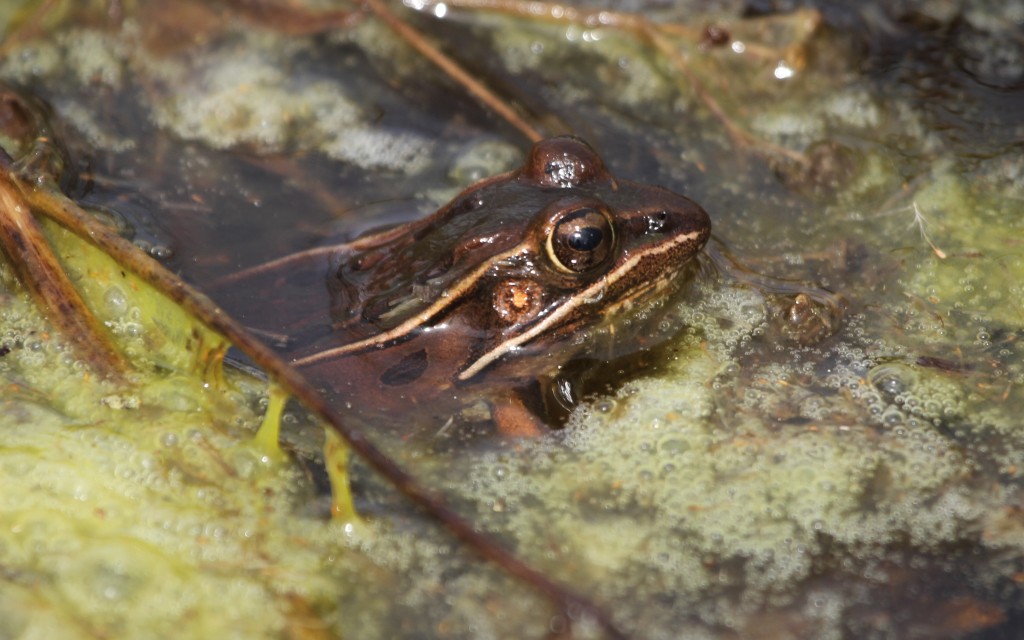New species discovered at Glades Wildlife Refuge
In October of 2014, the Atlantic Coast leopard frog (Lithobates [Rana] kauffeldi) was introduced to the world as a new species. Although this Anuran (order of frogs and toads) had been observed throughout the wetlands of New Jersey as far back as 2003, it took modern technology–such as DNA and digital bioacoustic analyses–to convince the larger scientific community that the frog was unique. Often, L. kauffeldi was simply mistaken for one of the other leopard frog species in the Northeast, such as the southern leopard frog (L. sphenocephalus) or northern leopard frog (L. pipiens).

Atlantic Coast leopard frog at Glades Wildlife Refuge, photo by staff member Brian Johnson
As its name suggests, the Atlantic Coast leopard frog’s range is the northeastern coast of the US, from central Connecticut to northeastern North Carolina. The species is thought to inhabit 10 states, but the entirety of its distribution and range is not yet known. They prefer to inhabit large wetland areas, such as marshes or wet meadows, with clear, shallow water. Our Glades Wildlife Refuge and Mauricetown Preserve (Cumberland County, NJ) offer ideal habitat.
“To me, they sound like wood frogs and southern leopard frogs calling together. I’ve been calling them wood frogs for years!” said Preserve Manager Brian Johnson. “It’s so amazing that a new species can still be discovered in our area.”
Listen to an audio recording of the Atlantic Coast leopard frog at Mauricetown Preserve, recorded by volunteer John Custer:
